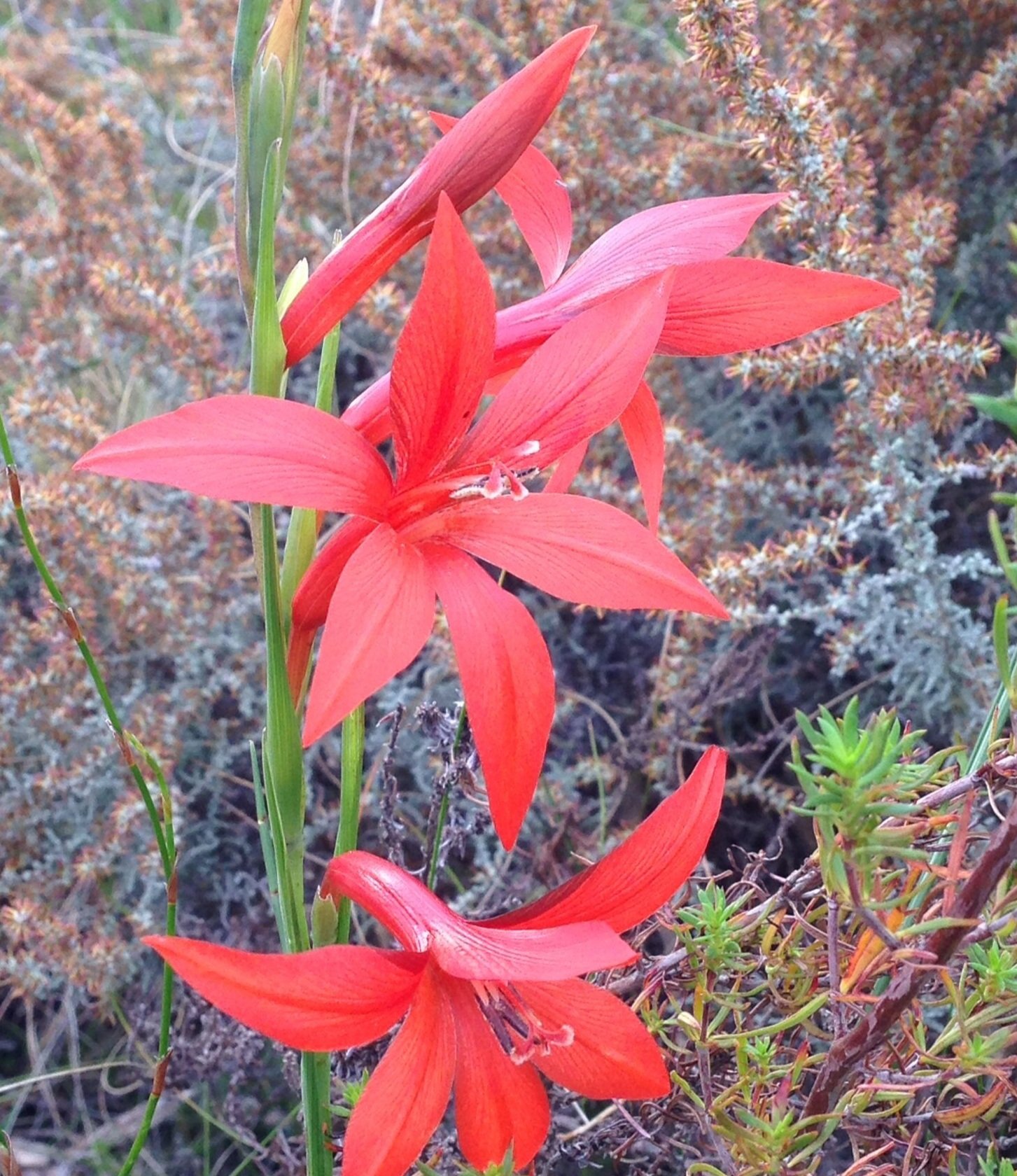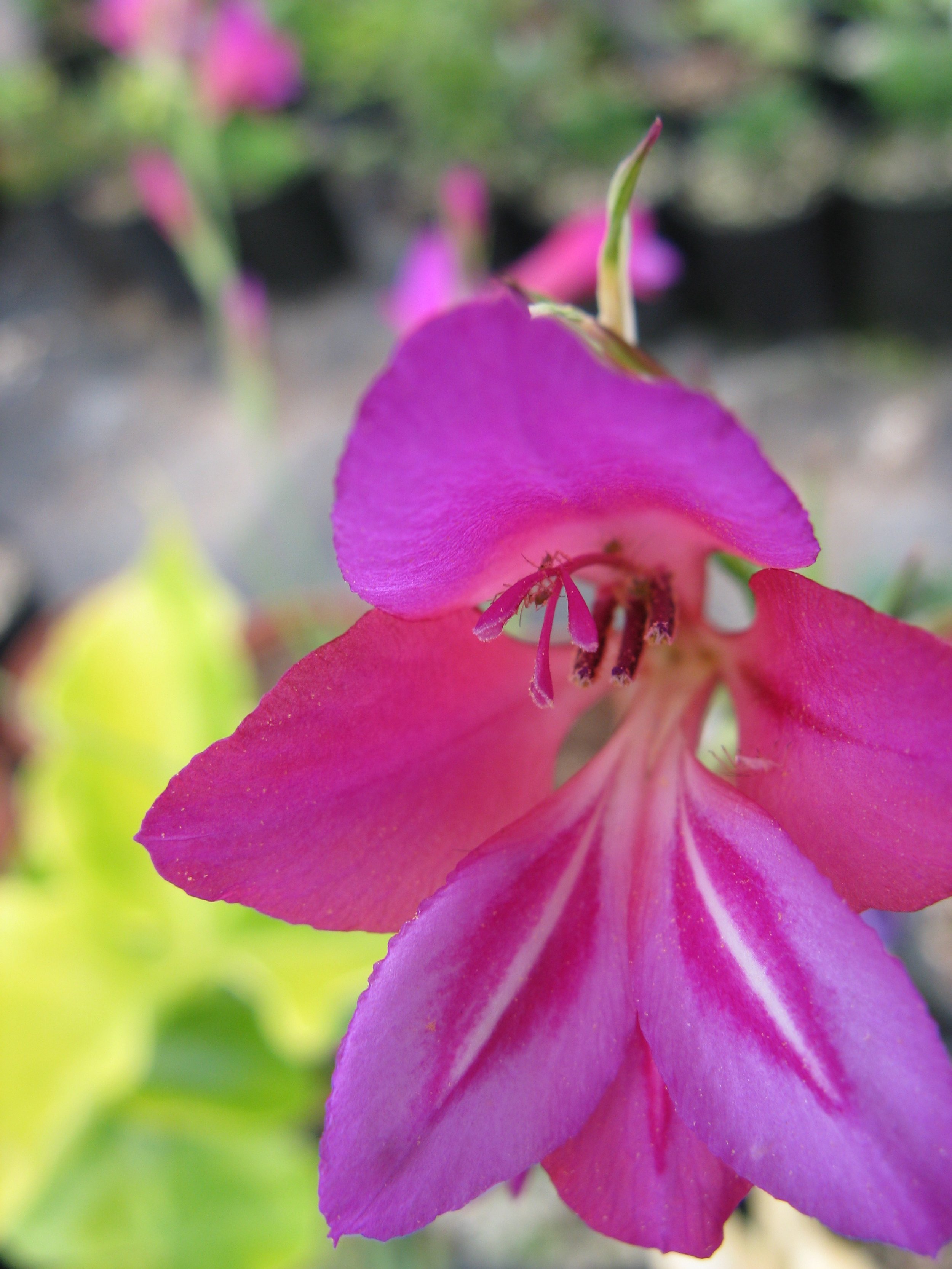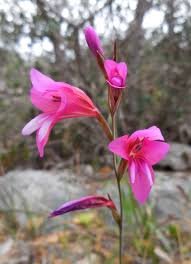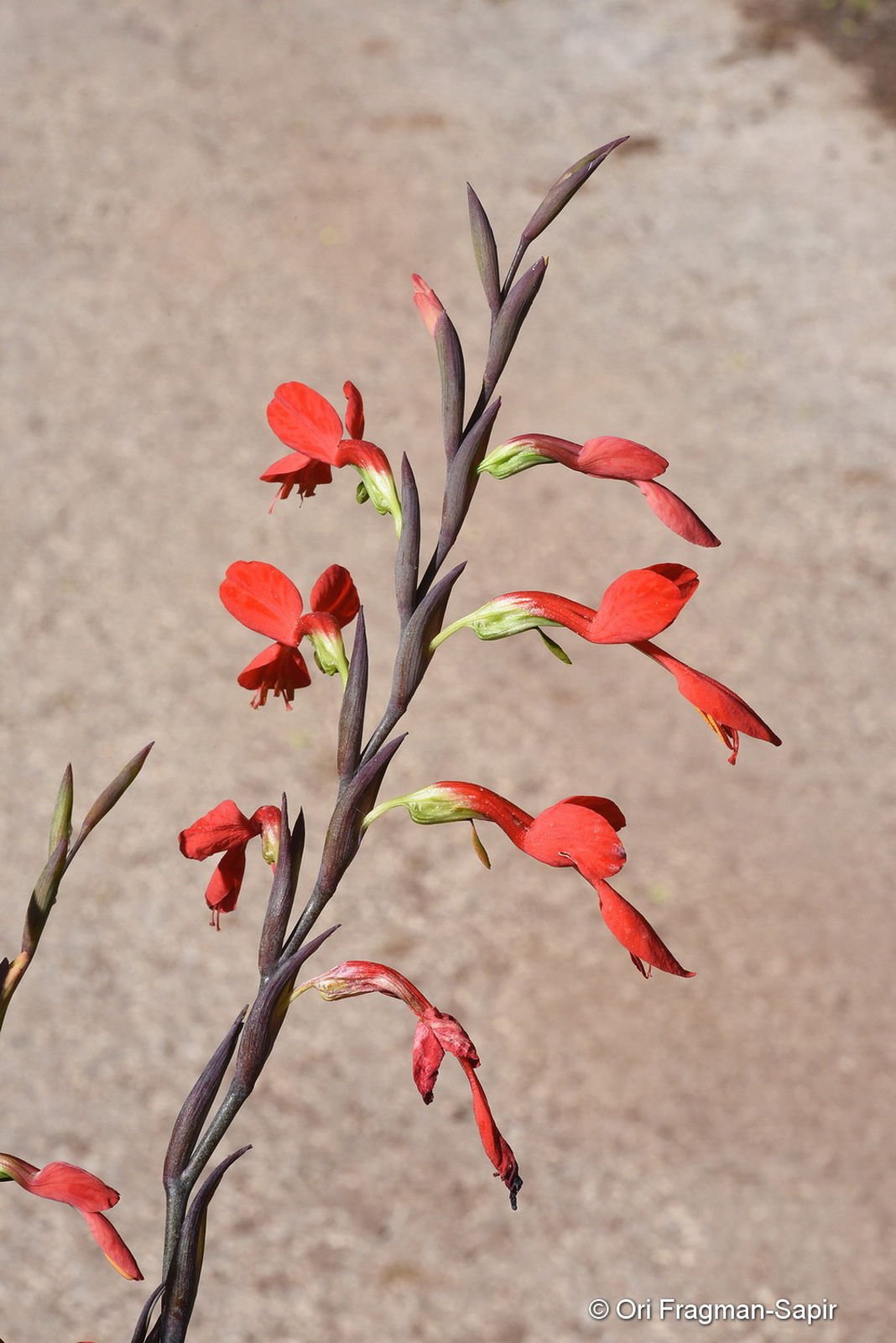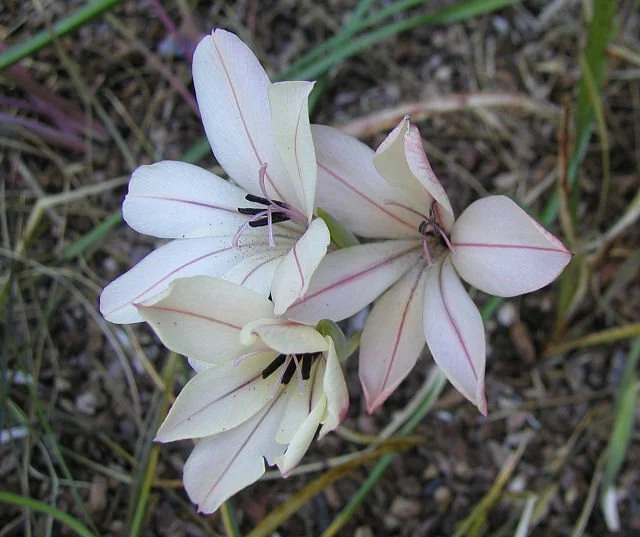
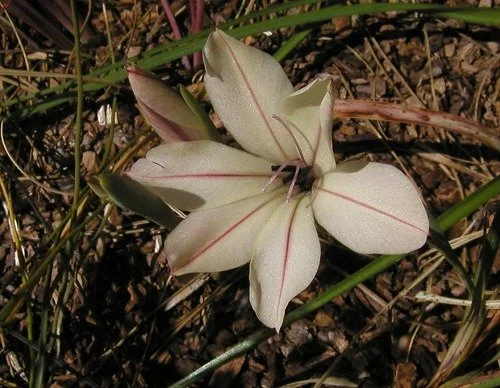
Gladiolus grandiflorus
From the winter rainfall or year around rainfall areas in the Renosterveld this species is the genetic precursor of many of the large flowered types we know today. The Renosterveld is a unique and ecologically rich vegetation type within the Cape Floristic Region of South Africa. Unlike the more well-known fynbos, which grows on nutrient-poor, acidic sands, renosterveld occurs on more fertile, clay-based soils and receives winter rainfall, typically between 250–600 mm annually. These relatively richer soils support a very different suite of plant life, and have sadly made renosterveld especially vulnerable to agriculture — most of it has been plowed for wheat or grazing. A center of diversity for many bulb species. I would love to go see it someday.
photos courtesy of Mary Sue Ittner
From the winter rainfall or year around rainfall areas in the Renosterveld this species is the genetic precursor of many of the large flowered types we know today. The Renosterveld is a unique and ecologically rich vegetation type within the Cape Floristic Region of South Africa. Unlike the more well-known fynbos, which grows on nutrient-poor, acidic sands, renosterveld occurs on more fertile, clay-based soils and receives winter rainfall, typically between 250–600 mm annually. These relatively richer soils support a very different suite of plant life, and have sadly made renosterveld especially vulnerable to agriculture — most of it has been plowed for wheat or grazing. A center of diversity for many bulb species. I would love to go see it someday.
photos courtesy of Mary Sue Ittner

